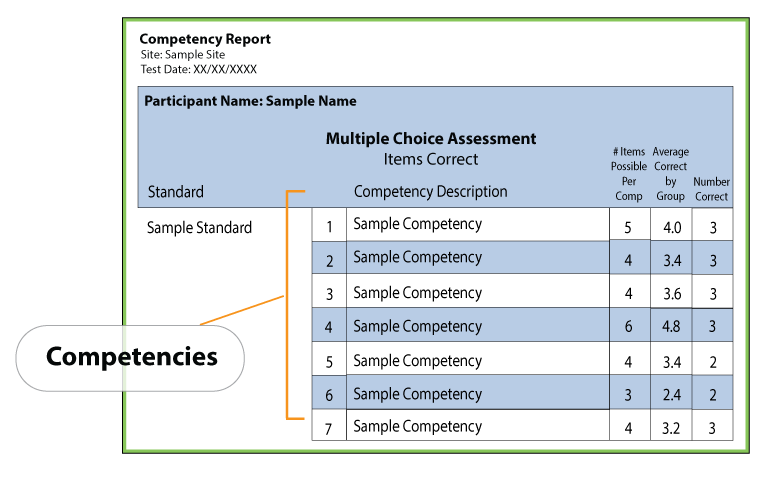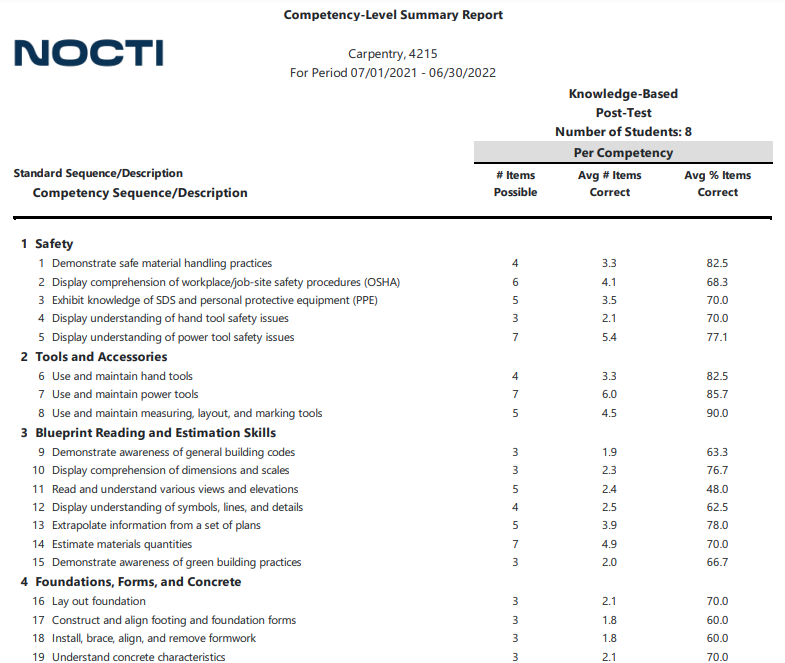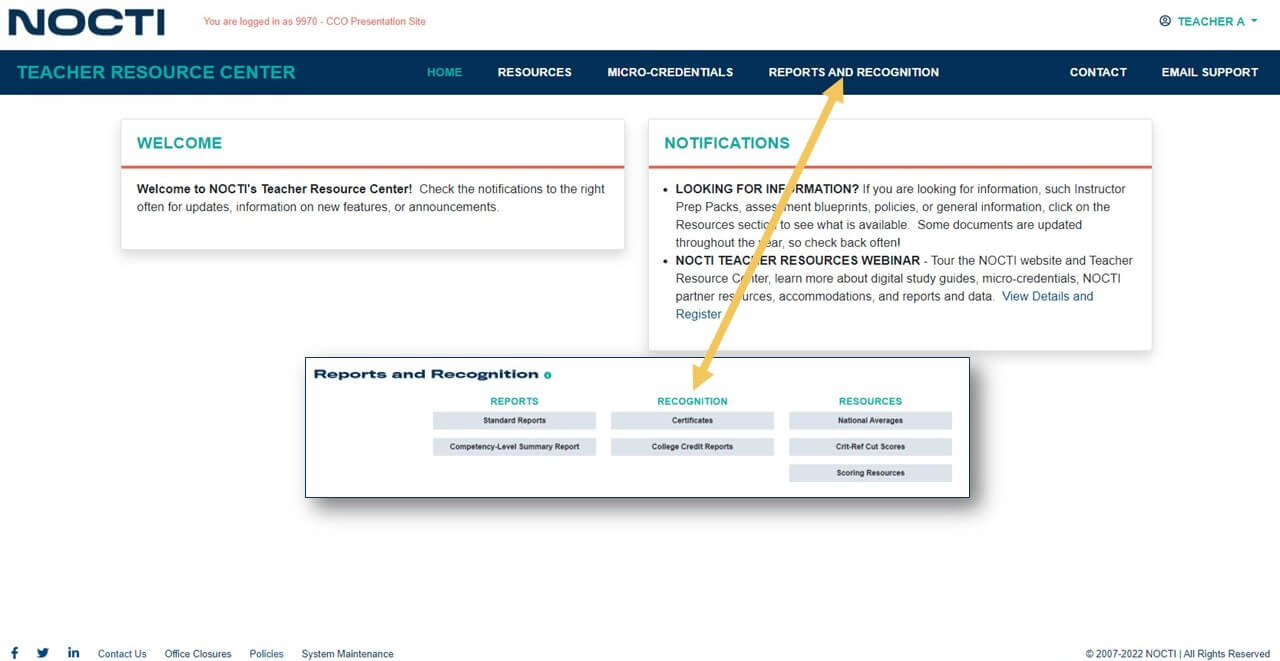Pre-tests are administered at the beginning or at a point in time during a program or course to determine a student’s baseline technical knowledge. Pre-test data is useful at key points during a career and technical education (CTE) program for creating learning or remediation plans. Pre-tests create opportunities for teachers and students to identify strengths and areas needing improvement, make curriculum adjustments, reduce test anxiety, and craft a more individualized instructional approach in preparation for post-testing.
Using pre-test data for actionable insights and helping students improve before post-testing is a straightforward process. Here are a few examples of how CTE educators and administrators can use pre-test data to fuel student success and overall program improvement.
Please note that NOCTI has two pre-testing windows. Contact NOCTI or your Site Coordinator to learn more about the allowable and most effective pre-testing windows.
Identify Strengths & Areas Needing Improvement
One of the most immediate uses of pre-test data is to help teachers and students identify strengths and gap areas.
After pre-testing, score reports are available for each student. An individual score report contains a total score as well as scores for each standard or performance job.
You will note the sample score report below was issued after post-testing and contains both pre- and post-test scores as well as the percentage of change between the two scores. This comparison is especially useful for analyzing trends in the data and pinpointing areas for program improvement, which we will explore more below.

An individual competency report is also available for each student and shows the number of items answered correctly within each standard area.

Teachers and students can use these specific and comprehensive breakdowns to pinpoint areas with lower scores and create a plan to help students improve before post testing. Both reports can be shared with students and incorporated into individualized learning plans.
After reviewing scores, teachers and students can use the digital study guides to make notes on areas targeted for improvement and track the activities and resources used to learn more about specific competencies.
Some schools administering NOCTI credentials have found a benefit to pre-testing twice during the program—once at the beginning to determine a student’s baseline knowledge and again midway through the academic year to measure the student’s progress toward improvement.
Improve Student Success
Picture a classroom with an educator capable of precisely identifying the individual instructional needs of each student and of the class as a whole. Reliable, objective data (like the kind offered in pre-test score reports) helps build a solid foundation for instruction tailored to each student’s specific needs. Let’s examine two hypothetical classrooms to help illustrate the benefits of data for individualized instruction.
Both classrooms A and B have educators with similar professional experience who are dedicated to helping their students succeed. Classroom A administered pre-tests at the beginning of the program. Within the first few months of school, educator A has used pre-test data to map out an instructional plan that has the potential to improve student competence and meet the differentiated instructional needs of class members.
Classroom B opted out of administering pre-tests. This educator is just as well-meaning and dedicated as their colleague and “covers” the curriculum conscientiously. However, educator B struggles to understand why some of the students do not achieve at higher levels even though they work hard to help them.
As the school year continues, students from classroom A have a clear understanding of where additional instruction could help strengthen the areas where they scored lower on the pre-test. Educator A has a purposeful way of observing the effects of strategies implemented in the classroom and is able to make adjustments that further the learning process.
The educator from classroom B follows the coursework as they always have, but they have no way of knowing if they are getting through to each student in the same manner as classroom A.
The difference between classrooms A and B has very little to do with the educators, curriculum, or the students, but rather the availability of solid, objective data and how that data is used to guide student improvement.
Reduce Test Anxiety
An added benefit of pre-testing is reducing test anxiety. Pre-tests are administered in exactly the same way as the end-of-program post-test. Students test in a proctored environment, using the same equipment and online testing platform as the post-test.
Students familiarizing themselves with the test and the environment can help ease anxiety on post-testing day and create an environment that supports the best opportunity to validate their newly found skills and receive recognition for their achievements.
Pre-tests also give administrators a chance to familiarize themselves with the testing process and ensure all the details are in order before post-testing day. Accommodations are available for students with a formalized plan in place like an IEP or 504 plan.
Make Program Improvements
When reviewed as part of a larger data story, pre-test data can help pinpoint areas for curriculum and program-level adjustments. Analyzing trends in NOCTI score reports is key when finding areas for potential program improvement.
For example, when pre- and post-tests are administered, scores for each are reported for the overall test and for each standard or performance job. An especially useful calculation is the percentage of change between the pre- and post-test scores. This shows the amount of gain or loss for each student as well as group scores and comparisons to state and national averages. This level of objective data can help administrators pinpoint areas where students consistently score lower or areas where a class scores below state or national averages.
Summary competency reports provide data for each standard at a classroom level and can be useful when investigating a group’s performance and identifying potential program improvements. Competency summary extracts provide the ability to pull data from a variety of filters, resulting in a data extract completely customized to your needs.

In the book Putting Your Data to Work, authors John Foster, Carol Hodes, and Sandra Pritz offer some guiding questions to consider while analyzing data:
- Are there gaps in student achievement, teacher instruction, or the curriculum being used?
- Has there been an impact from a new curriculum or facility?
- Are there performance differences among subgroups of students?
- Does the same assessment show differences between instructors (e.g., a two-teacher program) or between two groups of students (e.g., a.m. or p.m. session)?
NOCTI score reports and data extract tools are available to Site Coordinators through the Client Services Center. When teachers are provided with access to the Teacher Resource Center by their Site Coordinator and linking between students and teachers has been established, teachers can then access the reports in the Teacher Resource Center.

Start Putting Your Data to Work
NOCTI provides support and resources for those looking to use their data to fuel student success and make program improvements. From resources on how to put your data to work to insightful webinars, NOCTI provides CTE professionals the tools to make informed decisions with the goal of improving student success.
Here are some additional resources of interest:
- Putting Your Data to Work: Explore the various aspects of data-driven instruction with how-to examples and tips for all CTE professionals in this collaborative publication by NOCTI and ACTE.
- Connecting Data to CTE Program Improvement: Learn more about how data connects to CTE program improvement and helps equip future workforces for success in this blog post.
- Pre-Testing and Data Webinar: Gain insight into how to best utilize NOCTI pre-testing for program and student success. This webinar recording (along with many others) is available on-demand from NOCTI’s website.
